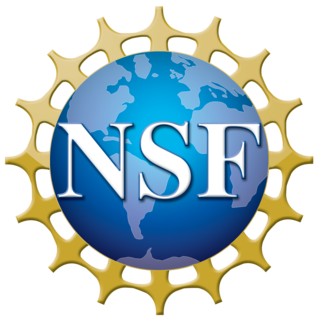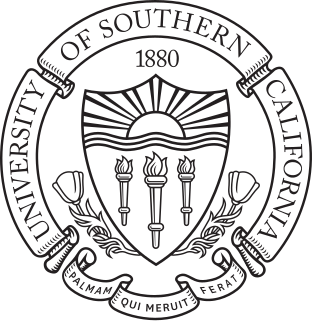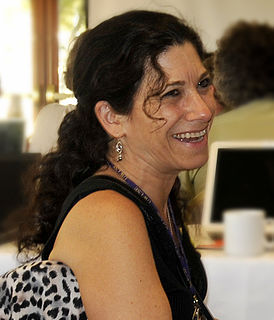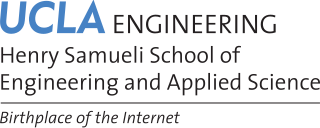The Center for Embedded Networked Sensing (CENS) was [1] a research enterprise funded by the National Science Foundation based at the University of California, Los Angeles.

Research comprises "creative and systematic work undertaken to increase the stock of knowledge, including knowledge of humans, culture and society, and the use of this stock of knowledge to devise new applications." It is used to establish or confirm facts, reaffirm the results of previous work, solve new or existing problems, support theorems, or develop new theories. A research project may also be an expansion on past work in the field. Research projects can be used to develop further knowledge on a topic, or in the example of a school research project, they can be used to further a student's research prowess to prepare them for future jobs or reports. To test the validity of instruments, procedures, or experiments, research may replicate elements of prior projects or the project as a whole. The primary purposes of basic research are documentation, discovery, interpretation, or the research and development (R&D) of methods and systems for the advancement of human knowledge. Approaches to research depend on epistemologies, which vary considerably both within and between humanities and sciences. There are several forms of research: scientific, humanities, artistic, economic, social, business, marketing, practitioner research, life, technological, etc.

The National Science Foundation (NSF) is a United States government agency that supports fundamental research and education in all the non-medical fields of science and engineering. Its medical counterpart is the National Institutes of Health. With an annual budget of about US$7.0 billion, the NSF funds approximately 24% of all federally supported basic research conducted by the United States' colleges and universities. In some fields, such as mathematics, computer science, economics, and the social sciences, the NSF is the major source of federal backing.

The University of California, Los Angeles (UCLA) is a public research university in Los Angeles. It became the Southern Branch of the University of California in 1919, making it the third-oldest undergraduate campus of the 10-campus University of California system. It offers 337 undergraduate and graduate degree programs in a wide range of disciplines. UCLA enrolls about 31,000 undergraduate and 13,000 graduate students and had 119,000 applicants for Fall 2016, including transfer applicants, making the school the most applied-to of any American university.
CENS was established at UCLA in 2002. The group conducted research primarily in the computer science subfield of embedded sensor networks. While the core research was grounded in computer science, the applications studied spanned a large range of fields including military applications, ecology, seismology, security monitoring, and farming applications to name just a few.

Computer science is the study of processes that interact with data and that can be represented as data in the form of programs. It enables the use of algorithms to manipulate, store, and communicate digital information. A computer scientist studies the theory of computation and the practice of designing software systems.

An embedded system is a controller programmed and controlled by a real-time operating system (RTOS) with a dedicated function within a larger mechanical or electrical system, often with real-time computing constraints. It is embedded as part of a complete device often including hardware and mechanical parts. Embedded systems control many devices in common use today. Ninety-eight percent of all microprocessors manufactured are used in embedded systems.

A military is an armed force primarily intended for warfare, typically officially authorized and maintained by a sovereign state, with its members identifiable by their distinct military uniform. It may consist of one or more military branches such as an Army, Navy, Air Force and in certain countries, Marines and Coast Guard. The main task of the military is usually defined as defence of the state and its interests against external armed threats. Beyond warfare, the military may be employed in additional sanctioned and non-sanctioned functions within the state, including internal security threats, population control, the promotion of a political agenda, emergency services and reconstruction, protecting corporate economic interests, social ceremonies and national honor guards. For a nation's military may function as a discrete subculture within a larger civil society, through the development of separate infrastructures, which may include housing, schools, utilities, logistics, health and medical, law, food production, finance and banking.
While it was headquartered at UCLA, the following universities and organizations also participated in CENS-led research:
- University of California, Merced
- University of California, Riverside
- University of Southern California
- The USC Information Sciences Institute
- California State University, Los Angeles
- The James Reserve
- NASA's Jet Propulsion Laboratory
- Caltech

The University of California, Merced, is the tenth and newest of the University of California campuses. The public research university is located in the San Joaquin Valley in Merced County, California, just northeast of the city of Merced, and between Modesto, California and Fresno, California. Most UC Merced students are from California with enrollment nearly evenly divided between Southern California, the Central Valley, and Northern California.

The University of California, Riverside, is a public research university in Riverside, California. It is one of the 10 general campuses of the University of California system. The main campus sits on 1,900 acres (769 ha) in a suburban district of Riverside with a branch campus of 20 acres (8 ha) in Palm Desert. In 1907 the predecessor to UCR was founded as the UC Citrus Experiment Station, Riverside which pioneered research in biological pest control and the use of growth regulators responsible for extending the citrus growing season in California from four to nine months. Some of the world's most important research collections on citrus diversity and entomology, as well as science fiction and photography, are located at Riverside.

The University of Southern California is a private research university in Los Angeles, California. Founded in 1880, it is the oldest private research university in California. For the 2018–19 academic year, there were 20,000 students enrolled in four-year undergraduate programs. USC also has 27,500 graduate and professional students in a number of different programs, including business, law, engineering, social work, and medicine.








